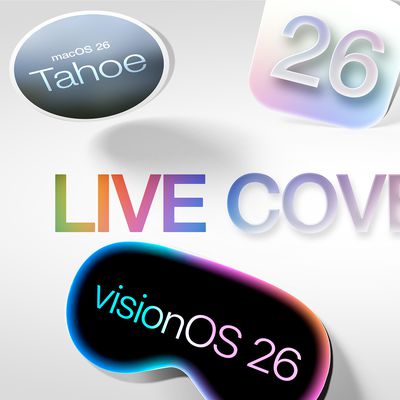iOS 14.5 to Make Zero-Click Attacks 'Significantly Harder'
Apple's impending iOS and iPadOS 14.5 update will make zero-click attacks considerably more difficult by extending PAC security provisions, according to Motherboard.

Apple has made a change to the way in which it secures its code in the latest betas of iOS 14.5 and iPadOS 14.5 to make zero-click attacks much harder. The change, spotted by security researchers, has now been confirmed by Apple and is slated to be included in the final update.
Zero-click attacks allow hackers to break into a target without the need for victim interaction, such as clicking a malicious phishing link. Zero-click attacks are therefore considerably harder for targeted users to detect and are considered to be much more sophisticated.
Since 2018, Apple has used Pointer Authentication Codes (PAC) to prevent attackers from leveraging corrupted memory to inject malicious code. Cryptography is applied to authenticate pointers and validate them before they are used. ISA pointers instruct a program about what code it should use when it runs on iOS. By using cryptography to sign these pointers, Apple is now extending PAC protection to ISA pointers.
"Nowadays, since the pointer is signed, it is harder to corrupt these pointers to manipulate objects in the system. These objects were used mostly in sandbox escapes and zero-clicks," security firm Zimperium's Adam Donenfeld told Motherboard. The change will "definitely make zero-clicks harder. Sandbox escapes too. Significantly harder." Sandboxes aim to isolate applications from each other to stop code from a program interacting with the wider operating system.
While zero-clicks will not be eradicated through this change, many of the exploits used by hackers and governmental organizations will now be "irretrievably lost." Hackers will now need to find new techniques to implement zero-click attacks on iPhone and iPad, but the security improvements to ISA pointers are likely to make a significant impact on the overall number of attacks on these devices.
Popular Stories
Apple is planning to announce several new features for the Messages and Phone apps on iOS 26, according to Bloomberg's Mark Gurman.
In a lengthy report outlining his WWDC 2025 expectations today, Gurman said that the two main changes in the Messages app will be the ability to create polls, as well as the option to set a background image within a conversation.
9to5Mac was first to report...
Apple's Worldwide Developers Conference (WWDC) starts today with the traditional keynote kicking things off at 10:00 a.m. Pacific Time. MacRumors is on hand for the event and we'll be sharing details and our thoughts throughout the day.
We're expecting to see a number of software-related announcements led by a design revamp across Apple's platforms that will also see the numbering of all of...
While the so-called "iPhone 17 Air" is not expected to launch until September, there are already plenty of rumors about the ultra-thin device.
Overall, the iPhone 17 Air sounds like a mixed bag. While the device is expected to have an impressively thin and light design, rumors indicate it will have some compromises compared to iPhone 17 Pro models, including worse battery life, only a single ...
In a lengthy report outlining his WWDC 2025 expectations today, Bloomberg's Mark Gurman shared more details about iOS 26's rumored new design.
According to Gurman, iOS 26 will feature a "digital glass" design inspired by visionOS, the operating system for Apple's Vision Pro headset. That is a well-known rumor by now, but he goes on to provide some more specific details, as listed below:There ...
macOS 26 will drop support for several older Intel-based Mac models currently compatible with macOS Sequoia, according to a private account on X with a proven track record of leaking information about Apple's software platforms.
macOS 26 will be compatible with the following Mac models, the account said:MacBook Air (M1 and later)
MacBook Pro (2019 and later)
iMac (2020 and later)
Mac...
Apple today announced a complete redesign of all of its major software platforms called "Liquid Glass."
Announced simultaneously for iOS, iPadOS, macOS, watchOS, tvOS, visionOS, and CarPlay, Liquid Glass forms a new universal design language for the first time. At its WWDC 2025 keynote address, Apple's software chief Craig Federighi said "Apple Silicon has become dramatically more powerful...



















